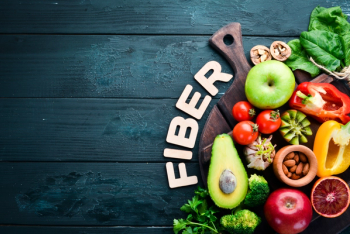
High-protein snacks and the search for healthier options
As more shoppers seek out high-protein snacks, how can they tell which ones are truly better? One company took a look.
The good news:
Snacking often gets a bad rap because many snack options are loaded with sugar, saturated fat, or excessive salt. The food industry has responded to the challenge of making snacks healthier, with endless “low sugar” and “low sodium” snacks, but that still does not mean that the nutritional benefits are increased.
Protein
Let’s first review why protein is critical to our daily diets.
The quest for protein-rich snacks (providing ≥5 grams of protein per serving) has led to a proliferation of snacks labeled as healthy protein options. It is important to keep in mind that not all protein snacks have the same nutrition profile, and consumers may end up with a food solution that sounds healthy when in fact it is not.
A New Tool
One of the challenges of finding nutrient-rich protein snacks is that, until recently, there was no ideal tool available for health professionals or food manufacturers to determine the nutrient density of protein snack products. Our team of scientists at Herbalife Nutrition modified a well-known nutrient-rich food index, originally created by nutritional epidemiologist Dr. Adam Drewnowski, to assess the nutrition profile of protein-rich snacks. The goal was to evaluate the nutrition density of some of the high-protein snacks already on the market and to understand what other nutrients consumers should seek or avoid based on products we assessed in the market. This nutrient-density tool we used can be used to assess other types of snacks on the market as well. We focused first on protein snacks since they have become so popular in the snack market.
In the protein snack index, we included nutrients that are commonly known to be consumed inadequately by the U.S. population—nutrients such as protein, vitamins A and D, calcium, and fiber. We also considered nutrients that are consumed in excess (sugar, saturated fat, and sodium). After evaluating more than 150 commonly consumed protein-rich food items, we found that there is a very wide range of nutrient density of products on the shelf, varying from negative to positive nutrition profiles.
Given the wide range of nutrition profiles of the protein-rich snacks that we looked at in the market, our conclusion is that consumers should look for high-protein products with a high amount of protein, vitamins A and D, calcium, and fiber, and a low amount of sugar, saturated fat, and sodium. As for calorie count, keep in mind that a healthy snack should contain 100-150 calories to prevent hunger and maintain satiety before the next meal.
So, the next time you grab what seems to be a protein-rich snack (e.g., a yogurt, shake, or protein bar), don’t just count calories, but check for key nutrients to make a smarter choice.
Simon Sum, DCN, RDN, ACSM-CPT, FAND, is director of North America Scientific Affairs, R&D, at Herbalife Nutrition.
References
1. NPD website. “New Year, New Nutrition Facts Label on Food: Most U.S. Consumers Read the Nutrition Facts Label and the Top Items They Look for Are Sugars and Calories.” Published January 8, 2020. Accessed at:
Newsletter
From ingredient science to consumer trends, get the intel you need to stay competitive in the nutrition space—subscribe now to Nutritional Outlook.





